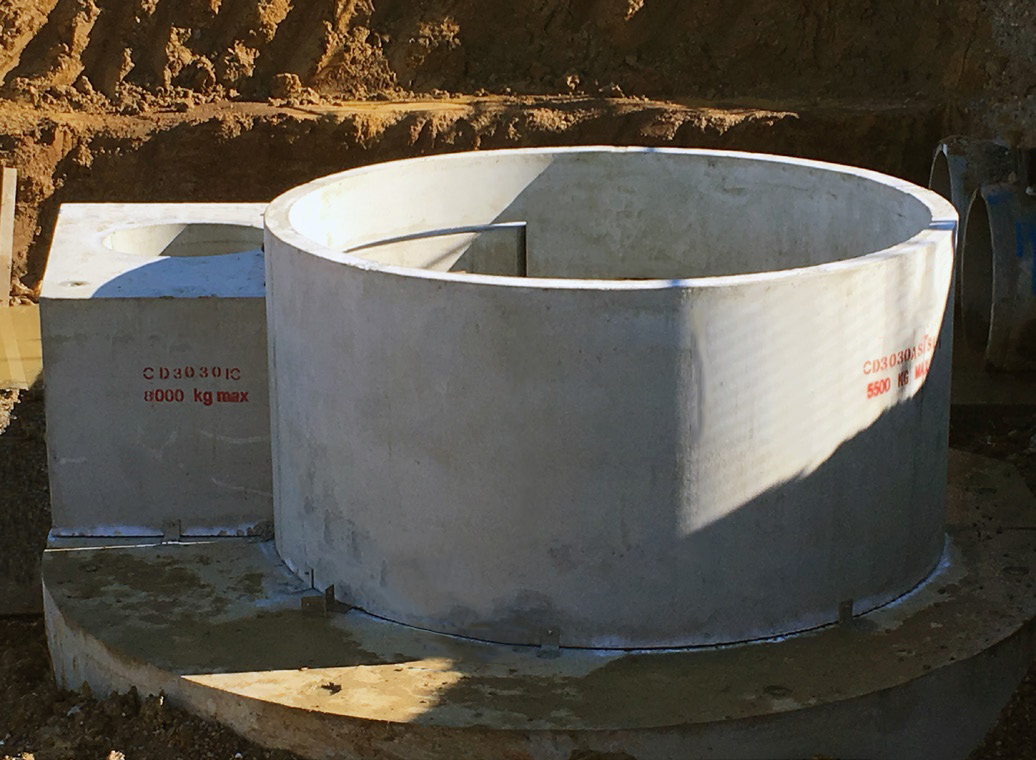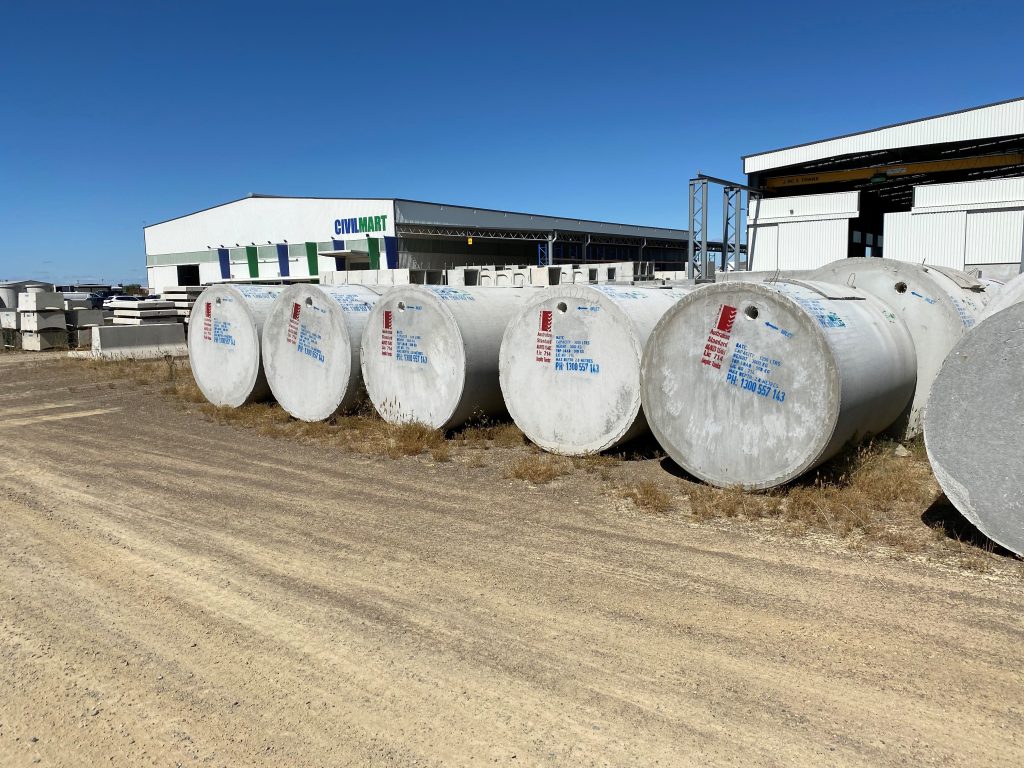Trade waste systems manage the collection, treatment, and disposal of liquid waste produced by commercial and industrial activities. As this waste contains harmful chemicals, contaminants, and solids, it can’t be released into the sewer system until it has been specially treated to remove them.
In this post, we discuss trade waste, including the different types of trade waste systems. We look at the components of these systems, including grease arrestors, and explain what they are, how they work, and how to maintain them.
What Is Trade Waste Water?
According to the National Waste Report 2022, trade waste is Australia’s 2nd largest liquid waste flow. Its biggest contributors in turn are food processing, manufacturing, and hospitality.
So, what is trade waste?
Trade waste is the non-sewage liquid waste produced by commercial and industrial activities. It can contain anything from toxic chemicals to oils, greases, and solids.
If not managed properly, trade waste can do enormous damage to the environment, and our sewer systems. For this reason, collection and disposal of trade waste is heavily regulated to protect the environment, public health, and sewer infrastructure.
Installing an appropriate trade waste management system will help ensure compliance with these regulations and avoid fines and potential legal action.
Importance Of Trade Waste Management Systems
A considerable volume of Australia’s trade waste eventually passes into our sewer systems so it must be treated between the source and sewer entry point. This is where an effective trade waste management system comes in.
These systems remove contaminants in trade waste that are not allowed in the main sewage system, helping ensure:
Environmental Protection – trade waste contains harmful substances that, if discharged without treatment, will pollute our natural water systems and soils. This in turn damages the environment, harms ecosystems, and poses a significant threat to public health.
Infrastructure Protection – trade waste often contains solids that can block and damage sewer systems, resulting in service disruptions, potential raw sewage leaks, and expensive repairs.
Resource Conservation – Effective trade waste management can recover and recycle valuable resources, not only saving money but also contributing to Australia’s sustainability targets.
What Are The Different Types Of Trade Waste Systems?
There are several types of trade waste systems:
- Gravity systems
These are the most common type of trade waste system. They are simple and cost effective because they rely on gravity to transport the wastewater from its source to the treatment facility. Equipment like a grease arrestor can be used within a gravity system so long as there is sufficient fall between the wastewater source and the arrestor. Typically, this would require the arrestor to be placed underground.
- Pressure systems
These systems use pumps and pressurised tanks to transport the wastewater from the source to the treatment facility. They are more efficient than gravity systems because pumps can push liquids along faster than gravity does, unless of course it’s a vertical drop. Above ground grease arrestors work well in these systems because there doesn’t need to be any fall between the source and the unit.
- Pressure/Gravity systems.
These use a combination of gravity and pumps / pressure to transport wastewater from the source to the treatment tank or grease arrestor and on to the sewer system. For example, wastewater may be pumped to an aboveground grease arrestor but gravity then transports the treated water into the underground sewer system. Or wastewater from various sources around the building may be pumped to holding trade waste containers and then fed by gravity to an underground grease arrestor.
Grease Arrestors Explained
We’ve mentioned grease arrestors above when explaining the various types of trade waste systems but whare are they?
What Is A Grease Arrestor?
A grease arrestor is basically an industrial-sized grease trap, or grease interceptor. Its role in a trade waste treatment system is to capture oils, grease, and fats (FOGs) from wastewater generated by facilities that use these products.
NB: commercial and industrial premises typically need a Trade Waste permit to have a grease arrestor installed, particularly if the wastewater will be discharged into the sewer system.
Who Generates FOG Wastewater?
The main sources of FOGs in trade waste are commercial kitchens, restaurants, hospitality venues, and food processing facilities. However, they’re not the only places that generate FOG-laden wastewater.
Automotive garages and workshops, and manufacturing facilities that use cutting oils, lubricants, and various other oily or greasy substances, also produce FOG wastewater. Commercial laundries are yet another source, particularly those that regularly process heavily soiled, oily, greasy items.
How A Grease Arrestor Works
Contaminated wastewater enters the arrestor where the FOGs float to the surface to form a layer of scum. Any solid matter in the water (food scraps, debris etc) drops to the bottom as sludge. Similar to a septic tank, this produces a middle layer of ‘cleaner’ water, which can then safely enter the sewer system.
What Are Common Grease Arrestor Sizes?
Grease arrestors come in a range of sizes to suit different premises and businesses. For example, our grease arrestors range from 750 to 5,000-litres so are suitable for a wide range of applications and configurations. Small, and under-sink units are also available for smaller establishments.
Note however that required arrestor size is generally specified by the terms of the respective Trade Waste permit. There are also minimum size requirements in place for certain types of premises, such as retail food preparation outlets.
What Is The Installation Process For A Grease Arrestor?
The first point to note is that you can’t simply ‘decide’ to install a trade waste system or grease arrestor, or at least not without contacting your local Water Authority first.
The second point is that the installation process for grease arrestors, and indeed most trade waste management systems, is controlled and regulated by your local Water Authority.
Third – although the various state and territory water authorities may have slightly different regulations depending on jurisdiction and local conditions, they have similar requirements with respect to capacity, installation, permitting and licensing, cleaning, maintenance etc.
What You Need To Know About Grease Arrestor Installation Processes
When you do contact your Water Authority about installing a grease arrestor, you will invariably discover that:
- There are likely to be specific size requirements for grease arrestors based on the size of the business.
- All trade waste and grease arrestor installations require a Trade Waste permit or license.
- All trade waste and grease arrestor installation work requires a (industrial) plumber, who may also need to be accredited with the Water Authority issuing the permit.
- All plumbing work must be carried out in accordance with manufacturer’s specifications and Water Authority regulations for these systems.
How To Maintain And Clean A Grease Arrestor
Cleaning and pumping requirements are also mandated by your permit, and must be carried out by licensed industrial liquid waste removalists. Again, these contractors may need to be registered with the Water Authority to ensure compliance with trade waste collection, disposal, and reporting standards.
If you need more information about grease arrestor installation and trade waste containers, contact our friendly Civilmart team.
Frequency of cleaning or pump out:
This depends on the size of the arrestor, the amount of wastewater flowing into it, and the terms of the Trade Waste permit. Generally, though, the recommendation is every 1 to 3 months or when:
- The total of floating and settled solids in the tank exceeds one third of its operational depth, or
- Wastewater samples (grab or composite) from the arrestor indicate its FOG levels exceed the acceptance criteria laid out by the Water Authority, or
- FOGs and/or gross solids are visible in the sample point downstream of the arrestor.
Type of maintenance:
Common grease arrestor maintenance involves:
- Pumping out the contents of the tank as per the Trade Waste permit,
- Checking the attachments, valves, and tank regularly to ensure everything is operational and not leaking,
- Resealing the cover at least annually or as required,
- Keeping the area around the tank clean and accessible for liquid waste contractors and regulatory personnel.
Who can do it:
Grease arrestor cleaning must be done by an authorised and licensed liquid waste management service contractor.
Record-keeping:
Mandatory records of all inspections, pump-outs, and maintenance activities relating to the grease arrestor are required. Regulatory staff do check these records to ensure compliance with both record keeping and maintenance and cleaning requirements!
Why Choose Civilmart For Your Trade Waste Needs?
Trade waste systems are an integral part of our overall waste management infrastructure. Removing industrial and commercial contaminants from trade waste before it enters regular sewer systems helps keep harmful chemicals and substances out of our environment. Our experienced Civilmart team have many years of knowledge and experience in trade waste system components, like grease arrestors, and can help you select the necessary equipment. Reach out today for more information about our trade waste systems, or to learn how installing one can benefit your business.




